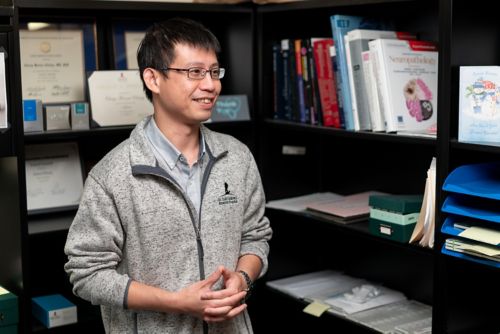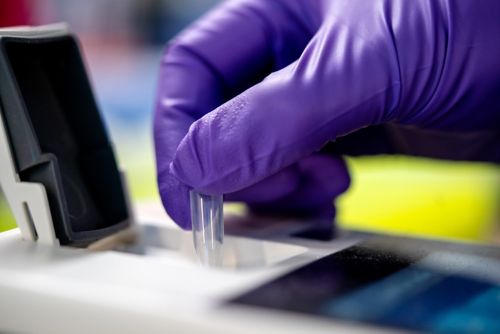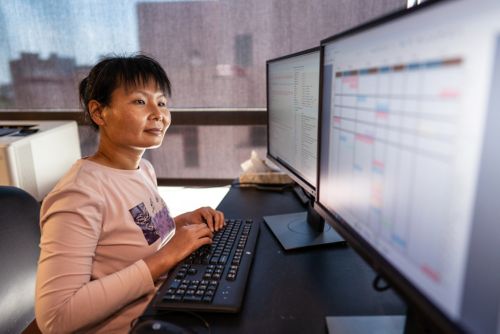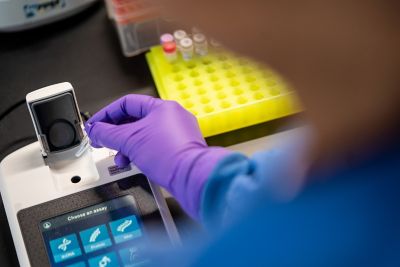St. Jude Family of Websites
Explore our cutting edge research, world-class patient care, career opportunities and more.
St. Jude Children's Research Hospital Home

- Fundraising
St. Jude Family of Websites
Explore our cutting edge research, world-class patient care, career opportunities and more.
St. Jude Children's Research Hospital Home

- Fundraising
Jason Cheng-Hsuan Chiang Lab
Advancing the diagnosis, classification, and prognostication of pediatric central nervous system tumors
About the Chiang lab
Understanding tumor development can lead to accurate tumor classification and the development of effective therapies—treatments with the potential for reduced side effects and better outcomes for patients. Our laboratory aims to impact the classification of central nervous system (CNS) tumors through a collaborative, multifaceted approach. Our goal is to identify new disease and tumor types to improve outcomes for pediatric patients with CNS tumors.

Our research summary
Detailed and precise information is critical for tumor classification and the subsequent development of effective therapeutics. Our research focuses on the complexities and nuances of tumor classification to improve outcomes for patients with cancer.
We take a multidisciplinary and multi-omics approach to advance the diagnosis, classification, and prognostication of pediatric central nervous system tumors. We focus specifically on pediatric gliomas and glioneuronal tumors, especially rare tumors for which models have not yet been developed.
The research programs in our laboratory investigate genetic alterations, biomarker development, immunohistochemistry, genomic and copy number alterations, signaling pathways, and transcriptional drivers of these tumors. Through our work, we hope to better understand tumor development and potential factors in treatment resistance.

We use both fresh and formalin-fixed materials for tumor sequencing, epigenetic profiles, transcriptomics, proteomics, phosphoproteomics, and glycomics. Our multidisciplinary research approach involves close collaboration with clinical colleagues to leverage data regarding treatment outcomes. This data, combined with the results of multi-omics techniques, may illuminate the unique characteristics of each tumor to illuminate candidates for clinical trials and targeted interventions. Several of our findings on tumors are featured in WHO Classification of Tumours of the Central Nervous System, 5th Edition, a resource used by clinicians and scientists around the world.

In addition to clinical colleagues, we collaborate extensively with data scientists at St. Jude, particularly with our colleagues in the Department of Computational Biology. Together, our teams recently harnessed the power of computational bioinformatics to identify a virus in a particular oncogene that triggered tumor development. The discovery of this new tumor-initiating mechanism has pointed to the possibility that, in some cases, pathologists and clinicians may need to look for a virus in the genome that activates a particular oncogene.
Emerging technologies will soon pave the way for a more in-depth understanding of each tumor, its transcription vulnerability, signaling pathway, and mechanisms that drive tumor development beyond genetic alteration. Such valuable insights into individual tumors will ultimately allow for the development of therapies for specific pathways, rather than the tumor itself, which will help minimize therapeutic side effects and lead to better outcomes for patients.

Learn more
St. Jude scientists on the hunt for ‘holy grail’ cancer vulnerabilities
Scientists at St. Jude Children’s Research Hospital are deploying genomic technologies to hunt for vulnerabilities in cancer.
Selected publications
Contact us
Jason Chiang MD, PhD
Associate Member, Pathology
Department of Pathology
MS 250, Room C5024A
St. Jude Children's Research Hospital
Follow Us

Memphis, TN, 38105-3678 USA GET DIRECTIONS

